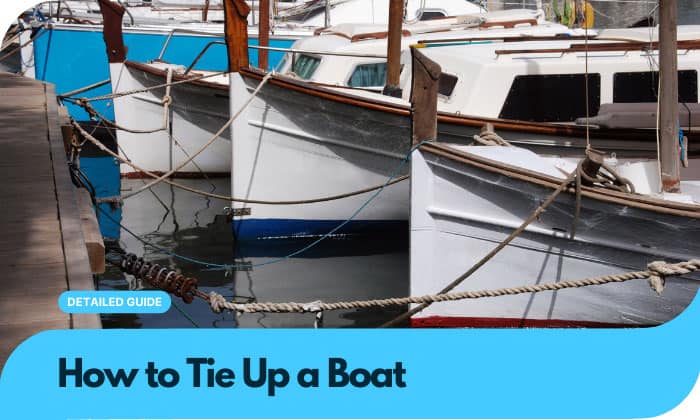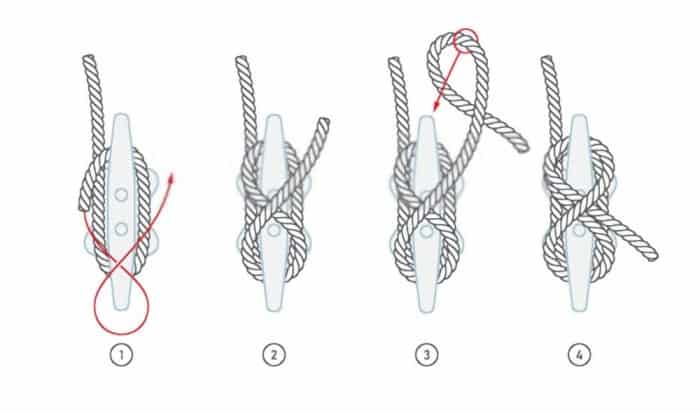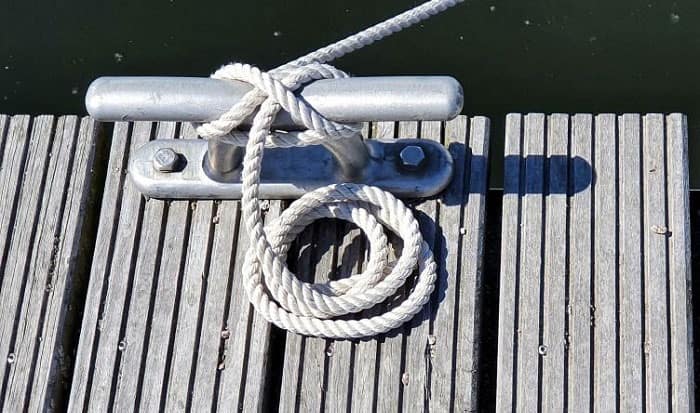Tying a boat, or the proper boating term – docking, is extremely important and can be done easily after a few times practicing.
The purpose of docking is to ensure your boat wouldn’t float around back and forth when not in use. If not properly docked, the boat can get severely damaged and may even wreck other vessels.
In this article, we’ll guide you through a rundown on how to tie up a boat like a pro. Stay tuned!
Table of Contents
Step-by-Step to Tie up a Boat
What to Prepare
Before getting to the steps, there are a few things you need to prepare:
Step 1: Setting Up The Dock Lines
After pulling up to the dock, you need to secure the dock lines. It is recommended that you have someone on the dock when you toss a spring line toward them.
What you’d want to do is to keep the boat from moving back and forth as it is moored at the dock, and the dock lines limit a vessel’s motion.
Step 2: Securing The Dock Lines
As you tie a boat to a dock, you’ll use a bow line, a spring line, and a stern line. At the end of the day, there are a hundred ways you can moor a boat to a dock; you just have to find one that is safe and secure.
- You can start at the stern line. Loop it at the back of the boat and run the rope all the way to the dock.
- Then, secure one end of the bow line at the very top of the boat and move its other end to the dock side.
- Run a spring line from a cleat near the stern to the dock in front of your boat.
- All you have to do now is tie the cleats on the dock to have the lines set up.
Clearly, a single cleat on a boat is not enough to secure it. Ideally, there should be three on both the starboard and port side of the vessel.
Even though there are 9 possible dock lines available, you don’t really need to use more than three or four.
Though having more lines can increase security, the ropes may become tied up as a ship tends to move up and down with the waves. Eventually, your boat rope tie will get stuck in a muddle.
- Note: if you are docking in a marina, you don’t necessarily need to tie up a boat spring line as there are not many tides.
How to Tie the Dock Lines
As there are several nautical knots for you to use, it depends on how long you plan to moor the boat to choose a suitable boat dock knot. In today’s article, we’ll guide you on how to tie a cleat hitch – one of the easiest knots to do.
You start by passing the rope through the base of the cleat. Next, create two 8-figure motions over the horns by bringing the rope from under the first horn and then over the second horn. Finally, make a locking hitch by creating the third turn with the rope tucked under itself – we call this a half-hitch.
Take a look at this cleat hitch diagram to understand the steps better.
Carry on tying this knot with other lines and voilà! That’s the easiest way to tie up a boat to a cleat.
In case you plan to tie up your boat overnight or longer than that, we recommend you use fenders to protect your vessel from potential damages.
FAQs
Tips to Tie a Boat in a Slip
Docking in a slip allows you to tie down a boat from both sides; however, it requires more ropes than tying up at a dock. Some slips consist of cleats and pilings, while others either have one or the other. When tying up your boat in a slip, pay attention to these things:
- In rough water areas, make sure you leave enough rope for the boat to move as the tides rise and fall.
- If you’re docking in a slip with no cleats, you’ll have to tie a boat to a piling, which requires more rope than usual. Also, tie your rope lower on the piling than you usually do on cleats to lessen the force on the wood. Read now this guide to tie a boat to a dock without cleats.
- Make sure to secure the bow lines on both sides of the slip to keep the vessel in place. Use four spring lines and two stern lines as well.
What is Tying up a Boat Called?
Tying up a boat is often referred to as mooring or lassoing. It is when you tie a boat to a mooring buoy, or any other fixed objects, rather than using an anchor.
Conclusion
By now, you should know how to tie up a boat.
It takes practice to get used to docking efficiently and swiftly, but you’ll get there! A cleat hitch is the most simple knot of all; however, you can learn to do more complex knots after you’re familiar with tying up your boat at a dock. Good luck!

Ten years of enjoying countless trips on boats never made me love them any less! So I am here to put all those experiences into good use for other boaters who want to have a safe and fun trip with their friends and families.



